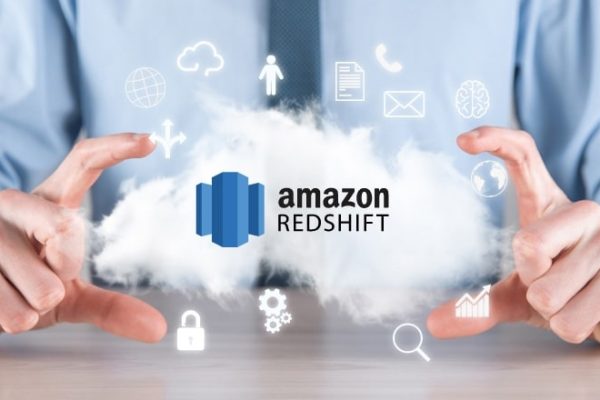5 Challenges with Big Data and How AWS Can Help Handle Them
We live in an age where a huge amount of data is generated from several sources every second. This data, also called big data, if analyzed correctly, has the potential to disrupt market trends and help businesses grow exponentially.
In fact, BARC reported that organizations leveraging big data have a 54% chance of enhanced operational process control and 52% better understanding of consumers. As a result, these companies saw an average 8% increase in revenues with a 10% reduction in costs.
Nevertheless, enterprises performing big data analytics often face various challenges, including quality, storage, data validation, data accumulation, and so on.
Why is Big Data Complex?
Each app you can think of–from Google Chrome to the latest gaming app you use–generates data, including the calculator app on your phone.
All these collections of data are invaluable information for the growth of an organization. And so, data collectors need an elaborate infrastructure to store, manage, analyze, and visualize this data.
Such complex, unstructured information in the form of pieces of a puzzle makes it difficult for a traditional data tool to handle it. Therefore, most organizations turn to the public cloud to manage and transform data for agility, scalability, and real time optimization.
Let’s look at the problems associated with big data in detail and how AWS offers a host of solutions to overcome these data challenges.
Top Five Challenges in Big Data Analytics
1. Lack of skills to handle diverse kinds of data
To run big data analysis tools, infrastructure with broad capabilities to build, scale, and securely deploy big data is required. This makes it easier for data engineers to stream through big data and extract information out of it. Data optimization can be difficult when an organization uses different databases or data streams. Information processing becomes complicated and making informed business decisions doesn’t look so easy.
AWS ensures that all types of data that is obtained and imported is stored for immediate use. Data sources can be of several types like in-house apps, company’s database records, spreadsheets, operational data, marketing data or other information received from the internet, etc.
2. Lack of scalability
Accurately forecasting data growth and trends is a key aspect of ensuring that you purchase the appropriate amount of storage. Moreover, with the on-prem infrastructure, scaling legacy data management practices is difficult, not to mention the cost of ensuring that all pipelines and analytical tools can handle the volume of your data.
Storing big data with scalable solutions is another benefit that AWS provides. It offers a secure storage area and can handle data before and after processing. It grants the users easy access to data sent over the network.
3. Increased costs of managing data on-prem
Managing data on-prem means spending a huge amount of money on new hardware, skilled data engineers, electricity, etc. Moreover, each time some new software is launched, development, setup, and configuration will burn another hole in your pocket.
By performing big data analytics on AWS, you can significantly save on your hardware costs. Since the cloud is shared, you only pay for the hardware you use. Also, scaling data and increasing storage is hassle-free and doesn’t involve getting more hardware on board.
4. Securing big data
Securing big data is one of the biggest challenges faced by an organization. Engineers are so preoccupied with storing and analyzing data, they find it difficult to ensure data security as well. This opens the door for malicious hackers who can steal the essential information of a company.
Big data is sensitive and prone to getting hacked into. Therefore, AWS offers security solutions across network, business processes, software, and facilities to ensure that the strictest procedures are in place. All AWS environments are consistently audited for ISO 27001, FedRAMP, DoD, SRG, and PCI DSS. This, in turn, helps cloud users ensure continuous compliance.
5. Availability of Purpose-Built Tools
While many businesses understand the value of data transformation, they often lack the rich variety of tools that are needed to optimally leverage Data processing, Data visualization, Machine Learning (ML) and Artificial Intelligence (AI).
While you might have identified the right tools, and understood the importance, it would still not be possible to avail all the tools in an on-prem environment due to cost of acquisition of all tools in the absence of a subscription model. Such an approach would be time consuming as well, considering the time it would take to test the efficacy of one tool after another.
Purpose built tools solve this challenge by optimizing data for your business model and enable constant improvisation to get the best of data optimization.
How Does AWS for Big Data Help?
Most organizations are now moving to AWS for added data security and ease of big data management. AWS can help you achieve the following:
Data processing and analysis: Converts raw data into consumable data making it easy for analytics. It helps transform raw data into understandable and meaningful data to be utilized effortlessly throughout the company.
Data visualization: Provides data visualization tools to convert processed data into a graph. Data visualization helps in better understanding of data by converting information into simple visual elements like charts and graphs.
Broad capabilities: You can throw your worries over building big data applications. AWS can support any workload regardless of its volume, velocity, and variety.
AWS Options that Meet Big Data Challenges
AWS has a solution for nearly every data need out there. Here we skim through the capabilities of a few prominently used services:
What’s Out There for Big Data
Beginning with the superpower of AWS for data storage, Amazon Simple Storage Service (Amazon S3) makes scalability and data availability look easy. Amazon S3 is an object storage service that enables highly secure and scalable cloud data storage. All you need to do is choose a region and create a S3 bucket to store large volumes of data and access it easily. Amazon S3 also has data versioning and is a low-cost option. It is widely used as a robust storage option for data lakes, backup and restore, enterprise applications, website platforms, mobile applications, IoT devices and other Big Data Analytics implementations. With Amazon S3, you can easily manage, optimize, and organize your data and configure secure access based on your needs.
Amazon Redshift comes next as a fast and widely used data analysis solution. It helps you analyze structured and partly structured data in your cloud data warehouse, data lakes, and other operational databases at scale. With Machine Learning (ML) and optimized hardware, Amazon Redshift enables faster insights, high performance, and scalability for your data warehouse.
Another key service is AWS Glue, which facilitates data analysis. AWS Glue is a managed Extract, Transform and Load (ETL) service that helps to categorize, clean, and move data between repositories and data streams. It works effectively with semi-structured data and is compared to Apache Spark that organizes data into rows and columns without a schema to begin with. Dynamic frames then enable schema flexibility so that you can get the best of AWS Glue and Spark for your analysis. AWS Glue accelerates analysis by combining data for various purposes such as application development, analytics, and machine learning and from various sources. It offers automation at scale and easy management due to a serverless environment.
AWS and Data Processing
Now this is where AWS Lambda, Amazon Kinesis, Amazon DynamoDB, Amazon Cognito, Amazon Athena, and Amazon S3 step in. With these you can build a strong data warehousing and analytics platform that supports superior performance and scalability for Serverless applications.
Stream processing is enabled using Amazon Kinesis which helps analyze data in real time. It helps ingest real time data from videos, audio, live streaming, and IoT devices to make quick business decisions and is highly scalable.
AWS Lambda helps process real-time streams for file processing without provisioning or managing servers. Amazon S3 is used to trigger AWS Lambda data processing or to connect to the file system, which helps shared access for massive file processing.
AWS Lambda and Kinesis together process real time streaming data for the serverless application, and help track activity, transactions processing, log filtering, click stream and social media analyses and so on.
The data is stored and managed in DynamoDB, which simplifies administration of large data sets. You can store and retrieve huge volumes of data, scale up and down, monitor resource usage, check performance, and create data backups with ease. You can also delete unused items automatically by setting rules and ensure resource efficiency.
Data created using Amazon Kinesis is then batched using Amazon S3 where it is archived. Queries are then run using Amazon Athena with the data in the S3 bucket. Athena is an interactive data analysis tool and is an opensource service ensuring speed and cost reduction. The analysis tool integrates well with multiple tools, is reliable and easy to maintain.
Amazon Elastic MapReduce (EMR), which uses the opensource framework, Hadoop, is used to run and scale huge data workloads including Apache Spark and Hive. EMR helps to rapidly distribute, process, analyze and apply ML to big data using Hadoop. It facilitates cluster provisioning and managed scaling, helps debug big data applications, and secure data through permissions. EMR helps remove maintenance overheads as it is based on opensource.
Finally, there is Amazon Managed Streaming for Kafka (MSK) which helps create Apache Kafka clusters, ensures continuous monitoring of these clusters and automatic replacement of a failed cluster. MSK makes Kafka highly available without operational overheads, doesn’t require application code changes, can be deployed easily, and helps reduce costs. It helps ingest and process streaming data in real time by leveraging Apache Kafka.
AI and ML with AWS
AWS offers a wide variety of AI and ML services that enable faster and accurate predictions for improving your customer experience, enhancing marketing campaigns, automation of data analytics, fraud detection, business performance analysis etc. With AWS services, you can deploy ML models very quickly, setup an ML friendly infrastructure for high performance and scalability and add AI services that are specific to your industry. Services like Amazon SageMaker, Amazon Augmented AI, GroundTruth, Amazon Comprehend, Amazon Polly, Amazon Transcribe and Amazon Forecast are a few that enable you to innovate and meet common business challenges easily.
Business Insights and AWS
Here’s where Amazon QuickSight comes into play. Amazon QuickSight helps you create interactive dashboards for Business Insights (BI) that you can easily access from any device and integrates with your applications. It is highly scalable, and you pay only for what you use.
Explore the Value AWS for Big Data
There are endless business growth opportunities with big data, providing it is managed and processed effectively. Its capabilities can further be magnified with the help of AWS. You can transform scattered data into meaningful insights by moving to AWS and gain an edge over your competitors.









